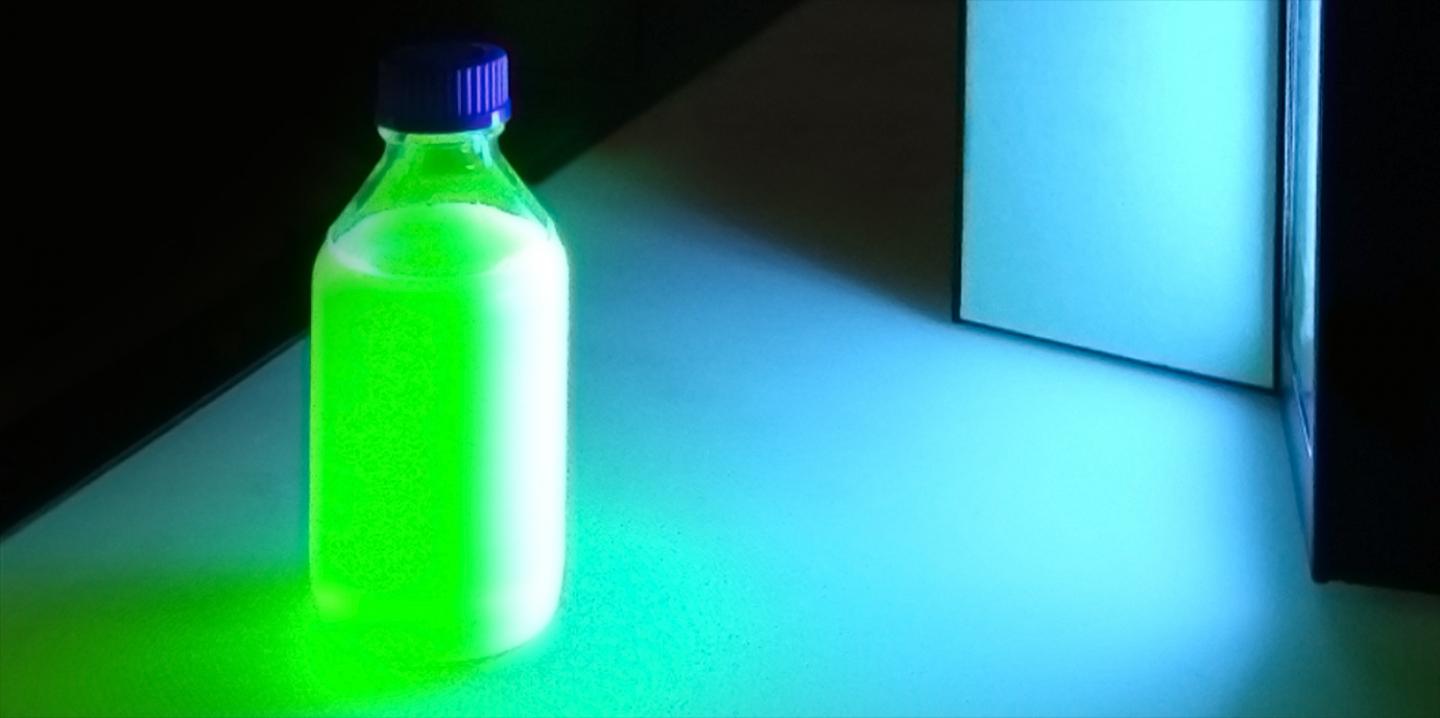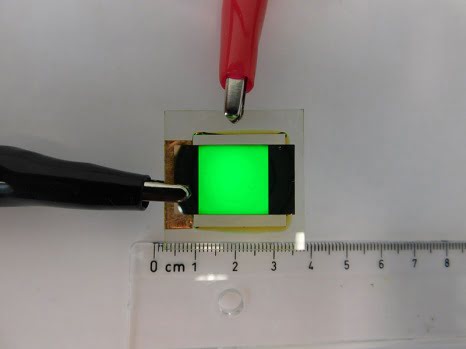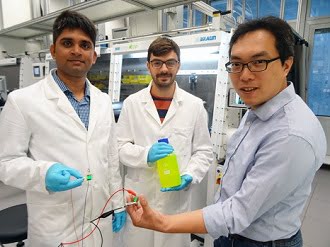
Ultrapure Green Light from Perovskite Could Enrich Next-Gen Displays
An ultrathin LED, as bendable as a sheet of paper and able to emit pure green light, has been developed using nanomaterials and simple room-temperature processes. Until now high-temperature processes have been required to produce pure light using LED technology.

ETH chemical engineers have succeeded in producing what they believe to be the purest green light to date. Courtesy of ETH Zurich/Sudhir Kumar, Jakub Jagielski.
Researchers from ETH Zurich used colloidal 2D perovskites — rather than indium gallium nitride — to convert the electrical current passing through the LED into light. The perovskites demonstrated a high exciton binding energy of 162 million electron volts (meV), resulting in a high photoluminescence quantum yield. The team further demonstrated large-area (3 sq cm) and ultraflexible (bending radius of 2 mm) LEDs based on 2D perovskites.

The ultra-green LED made with ‘2D nanocrystals’ is just 4.8 nanometers. Courtesy of ETH Zurich.
Because perovskite is relatively inexpensive, its use helped make the manufacturing process for the LEDs simple and fast. According to researchers, it takes just 30 minutes to chemically clean perovskite and make it ready for use in the LEDs.
The perovskite crystal used for the LED is just 4.8 nm thick, further enhancing color quality. The flexible, ultrathin LEDs can be produced inexpensively and quickly using the roll-to-roll process.
Pure green LEDs are essential for extending the color gamut in next-generation displays as defined by the recommendation (Rec.) 2020 standard. However, because the human eye is more sensitive to the green spectral region than blue or red, it has not yet been possible to achieve an ultrapure green electroluminescence with a sufficiently narrow bandwidth to meet the Rec. 2020 standard.
The ultrapure green light developed by the team is in conformance with 97 to 99 percent of the Rec. 2020 standard. By comparison, the purest color TV displays currently available average only about 73.11 to 77.72 percent of the standard, and none exceed 80 percent.

(l-r) Sudhir Kumar, Jakub Jagielski and Chih-Jen Shih with their ultrapure green light. Courtesy of Florian Meyer/ETH Zurich.
The next step for the team will be to improve the efficiency of their LED. Currently, the ultrapure green light works at three percent efficiency when converting electricity into light. In comparison, TV screens in use today have efficiency values of five to 10 percent.
The team is aspiring to six to seven percent efficiency in the next version of its LED. Shih also sees the potential for improving the lifespan of the LED. Currently, it illuminates for about two hours, compared to years of illumination provided by screens currently on the market.
The research was published in Nano Letters (doi: 10.1021/acs.nanolett.7b01544).
Published: September 2017